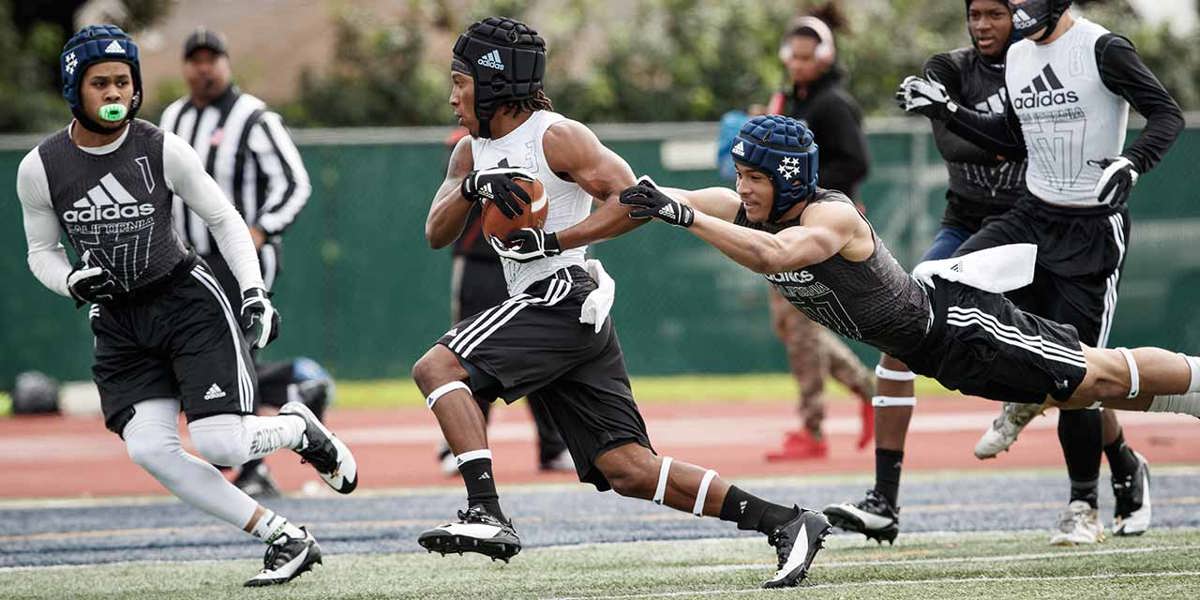Protecting the future of American Football

With participation in youth football in steady decline, Gamebreaker Headgear CEO Mike Juels explains how better protection for players will better protect the future of the game.

Anyone in and around sport knows the benefits of taking part.
In the United States’ sporting hierarchy, football is the pinnacle. Its physicality, the discipline and training required to compete, and the camaraderie among players, is unmatched. It’s therefore very alarming to hear parents say they don’t want their kids to play.
Football in the US is not a growth sport – in fact, it has been in slow decline for more than a decade. The primary reasons are the fear of head injury, the risk of chronic traumatic encephalopathy (CTW) and the impact on long-term health.
There are risks in all contact and collision sports, but football has come under particular attack. Extensive media coverage prompted by high-profile lawsuits, academic studies and popular movies such as Will Smith’s Concussion has forced a conversation about head injuries.
At the elite level, the National Football League (NFL) is doing a great job addressing these issues – a better job than some other sports where there appears to be little dialogue.
Much attention has been paid to the protocols that take place after an injury. The NFL is also addressing injury prevention with rule changes, adjustments to the way the game is played and the measure, enacted in 2011, to limit the number of padded practises during training camp and the regular season.
It must be remembered, though, that fewer than 2,000 athletes play football professionally in the US. All this focus has been on protecting a relatively small number of grown men in peak physical condition with fully developed brains.
In contrast, more than one million American kids play tackle football at high school level alone. At the youth level, that number reaches over five million kids. Out there, it’s the Wild Wild West.

Policy Vacuum
Thousands of leagues across all formats of football operate their own rules, some of which have guidelines around player welfare. But there is no overall sanctioning body; no legislative power to stop, for example, a coach arranging five full-contact padded practices a week and a game on Saturday.
There are of course many enlightened coaches and leagues, but on the flip-side are the volunteers, the parents – willing helpers who don’t have the expertise or wherewithal to implement reforms.
Those who need the most protection, in my view, are too often getting the least. This is why Gamebreaker is working to raise awareness about these issues. Our mantra is: Protect the Player, Protect the Game. We believe this is the best approach to address the decline in participation.
In tackle football, a lot of the talk is about making tackling safer. After all, it’s a key part of the game. Unfortunately, with tackling comes the inherent risk of injury.
We need to do less of it in practice and save it for game days where and when possible. More injuries occur in practice than in games. So be like boxers who limit the amount of full-contact: they spar or shadow box. Or like fighter pilots who learn most of their skills in a simulator.
Football needs to be simulated during practice with a focus on technique. Proper teaching and tackling technique should always come before full contact begins at the youth level.
Flag football is becoming more popular as it is perceived to be safer. This may not be the case. It has always been played without head protection as it’s a non-contact game – in theory. The reality, though, is that incidental and accidental contacts often occur.
Our view is that protective headgear should be mandatory. Mouthguards are usually worn – just in case, say the leagues. So they’re happy to protect players’ teeth, which can be repaired, but not their brain? Studies show that flag isn’t without risk either.
The only argument against this is the gladiator effect – that if you put headgear on someone they’re going to go harder. But if you said that to a coach, they would laugh. The kids are already going full tilt.
If there was a chance that a soft-shell helmet would enhance someone’s performance, we wouldn’t sell our headgear as safety equipment, we’d sell it as a recruiting tool!

Sporting Integrity
Our aim is to put soft-shell head protection, that can’t be weaponised, into flag football and other sports where there is a risk of head injury, such as soccer, lacrosse, field hockey and rugby.
The Gamebreaker-PRO headgear, featuring a layer of D3O impact protection, was recently five-star rated by Virginia Tech Helmet Labs – but what we are selling is what it does, not what it is. We’re not trying to change the rules of a sport, we’re trying to protect its integrity by making it safer, both in training and on matchdays.
In 2017, Gamebreaker became official supplier to adidas Football US for 7v7 and flag football, including elite high school 7v7 players in the adidas Football 7v7 National Championship Series.
Headgear was mandated at all their football events and adidas immediately saw the value of our product – they run a lot of grassroots football programs and prioritise athlete safety.
Football needs to partner with outside organizations that can help them. The NFL, National Collegiate Athletic Association (NCAA) and National Federation of State High School Associations (NFHS) now recognise the issues but they need to prescribe top-to-bottom solutions.
How does the message trickle down from the NFL to a college player to a high school player to a ten-year-old in a local league? Pressure has to be placed on the youth administrators, some of whom are running huge enterprises.
If they’re not going to take responsibility, others are waiting to step in. I don’t believe this helps football or its ecosystem. The values and principles learned from playing football are too great.
![Umbraco.Cms.Core.Models.MediaWithCrops`1[Umbraco.Cms.Web.Common.PublishedModels.Image]](https://cdn.d3o.com/media/1820/gamebreaker-american-football-player-celebrating.jpg?width=1996&height=1042&format=webp&v=1dbb39ba57f0770)